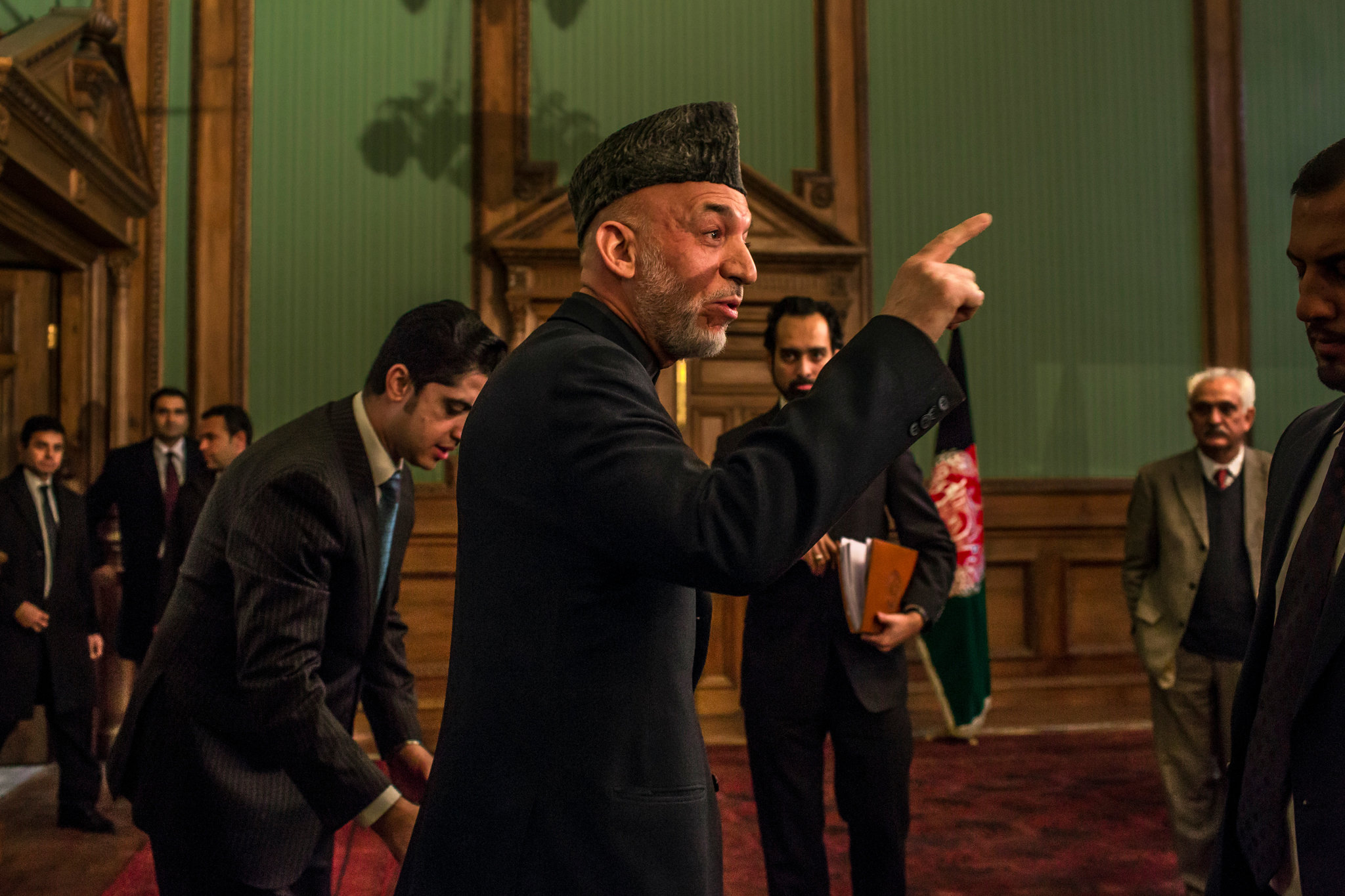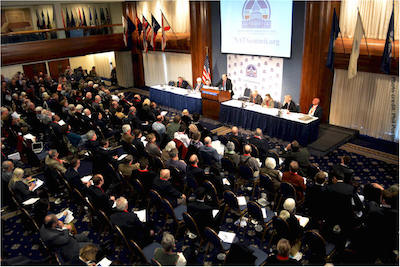Afghanistan Exit Is Seen as Peril to C.I.A. Drone Mission
Jan 26 2014 / 9:50 pm
John Whitbeck’s commentary:
On January 24, I wrote at the end of my introduction to an article on Iraq that the Obama administration’s impulse to maintain an American military presence in Afghanistan for another ten years “can be explained only by a self-interested concern of American political and military ‘leaders’ to kick the can down the road in the hope that the ultimate and inevitable failure of America’s effort to ‘fix’ Afghan culture and society so as to bring them into conformity with American values, interests or convenience will only become undeniably obvious on someone else’s watch.”
The New York Times report for which a link is transmitted below presents, credibly, two other explanations for perpetuating the American military presence in Afghanistan.
Significantly, neither explanation has anything to do with Afghanistan.
President Hamid Karzai is presumably aware of this. Indeed, he may well suspect, not unreasonably, that these goals for staying another ten years are the same goals which have kept the Americans in Afghanistan for most of the past 13 years and that the farfetched goals relating to his country which have been formally proclaimed and propagated by the U.S. government have only constituted eyewash to justify the use of Afghan territory in pursuit of America’s genuine goals elsewhere in the region.
Afghanistan Exit Is Seen as Peril to C.I.A. Drone Mission
By David E. Sanger and Erin Schmitt
New York Times, 1/26/14 – The risk that President Obama may be forced to pull all American troops out of Afghanistan by the end of the year has set off concerns inside the American intelligence agencies that they could lose their air bases used for drone strikes against Al Qaeda in Pakistanand for responding to a nuclear crisis in the region.
Until now, the debate here and in Kabul about the size and duration of an American-led allied force in Afghanistan after 2014 had focused on that country’s long-term security. But these new concerns also reflect how troop levels in Afghanistan directly affect long-term American security interests in neighboring Pakistan, according to administration, military and intelligence officials.
The concern has become serious enough that the Obama administration has organized a team of intelligence, military and policy specialists to devise alternatives to mitigate the damage if a final security deal cannot be struck with the Afghan president, Hamid Karzai, who has declined to enact an agreement that American officials thought was completed last year.
If Mr. Obama ultimately withdrew all American troops from Afghanistan, the C.I.A.’s drone bases in the country would have to be closed, according to administration officials, because it could no longer be protected.
Their concern is that the nearest alternative bases are too far away for drones to reach the mountainous territory in Pakistan where the remnants of Al Qaeda’s central command are hiding. Those bases would also be too distant to monitor and respond as quickly as American forces can today if there were a crisis in the region, such as missing nuclear material or weapons in Pakistan and India.
A senior administration official, asked about the preparations, responded by email on Sunday that as the possibility of a pullout “has grown in Afghanistan, we have been undertaking a methodical review of any U.S. capabilities that may be affected and developing strategies to mitigate impacts.”
The official added that the administration was determined to find alternatives, if necessary. “We will be forced to adapt,” the official said, “and while perhaps less than most efficient, the United States will find ways necessary to protect our interests.”
The issue is coming to the fore after the Pentagon recently presented Mr. Obama with two options for the end of the year. One option calls for a presence through the end of Mr. Obama’s term of 10,000 American troops who could train Afghan troops, conduct counterterrorism raids and protect the American facilities, including those in eastern Afghanistan where drones and nuclear monitoring are based.
Under the other, so-called zero option, no American troops would remain. The United States has said that if it is unable to reach a final security arrangement with Mr. Karzai, it is prepared, reluctantly, to pull out completely, as it did in Iraq in 2011.
Mr. Obama has made “no decisions” on troop levels, said Caitlin M. Hayden, the spokeswoman for the National Security Council. “We will be weighing inputs from our military commanders, as well as the intelligence community, our diplomats and development experts, as we make decisions about our-post 2014 presence in Afghanistan,” she said.
In his State of the Union address on Tuesday night, however, Mr. Obama is expected to say that by the end of this year the Afghan war will be over — at least for Americans — slightly more than 13 years after it began, making it the longest in American history.
Mr. Obama’s hope is to keep 8,000 to 12,000 troops — most of them Americans, some from allies — in Afghanistan after the NATO combat mission ends this year. The resurgence of Al Qaeda’s affiliate in Iraq, combining with insurgents in Syria, has offered a sobering reminder of the consequences of the American decision to withdraw all its troops from Iraq. Mr. Karzai seems to be betting that the damage that a withdrawal would do to American intelligence operations is so great that he may be able to strike a better deal.
Even though the zero option has few supporters in the administration, the idea has gained renewed credence with each day that Mr. Karzai delays signing the security accord and poses new demands to the United States. “Karzai has believed for some time that he has this leverage — that we need him and his bases more than he needs us,” said Daniel Markey, a former State Department official and the author of “No Exit From Pakistan,” published last year.
Secretary of State John Kerry is to meet Pakistan’s foreign and national security policy adviser, Sartaj Aziz, here on Monday, and counterterrorism operations are to be a major subject of discussion, a senior State Department official said Sunday. Talking with Pakistan about its nuclear program is especially delicate.
In recent years the country has accelerated its drive to build small tacticalnuclear weapons — similar to what the United States placed in Europe during the Cold War — that could be used to repel an invasion from India. But those weapons are considered more vulnerable to theft or use by a rogue commander, and they are one reason that American intelligence agencies have invested so heavily in monitoring the Pakistani arsenal.
A scare in 2009, when the United States feared that nuclear materials or a weapon was missing in Pakistan, led Mr. Obama to order the basing of a permanent monitoring and search capability in the region.
But the complexities of bringing those capabilities to an end are forcing the intelligence agencies, which run the covert strikes into Pakistan and monitor nuclear events around the world, to scramble. Their base inside Pakistan was closed after a shooting involving a C.I.A. security contractor, Raymond Davis, and the raid into Pakistani territory that killed Osama bin Laden, both in 2011.
Crucial to the surveillance of Bin Laden’s house in Abbottabad was the use of an RQ-170 drone. Pakistani officials talked openly in the weeks after that raid about their fear that the unmanned aircraft was also being used to monitor their nuclear arsenal, now believed to be the fastest growing in the world. The raid, and those drones, came out of American facilities just over the Afghan border.
“You hear about the president’s decision of the ‘zero option’ in the context of the future of Afghanistan, but this is really more about Pakistan,” said one former senior intelligence official who has consulted with the Pentagon and intelligence agencies about the problem. “That’s where the biggest problem is.”
The C.I.A.’s drone bases in Afghanistan, including one in the eastern part of the country, allow operators to respond quickly to fresh intelligence. The proximity to Pakistan’s tribal areas also allows the Predator drones and their larger, faster cousin, the Reaper, to fly longer missions without having to return to base.
“There certainly is an interdependence between the military and the intelligence community in Afghanistan,” one senior administration official said.
The Reapers, the newest, largest and most capable of the unmanned armed vehicles, have a range of up to 1,100 miles. That puts Pakistan’s tribal areas within range of some bases the American military has flown from, especially in Kyrgyzstan, where for more than a decade the Pentagon has conducted air operations, include cargo and troop flights, out of a base at Manas. But the United States said last fall that it would pull out of that base in July.
Other allied countries are within the Reaper’s range — in the Persian Gulf, for example. But the distances would be too great to carry out drone operations effectively, officials said, and it is very unlikely that any of those nations would approve launching the diplomatically sensitive strikes missions from their soil.
“There’s no easy alternative to Afghanistan,” one former senior American counterterrorism official said.

